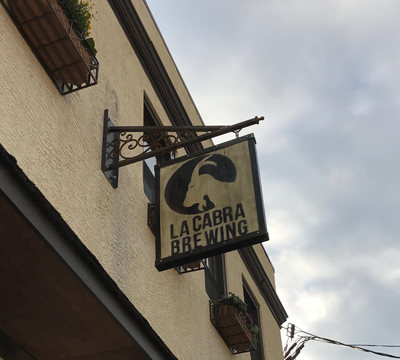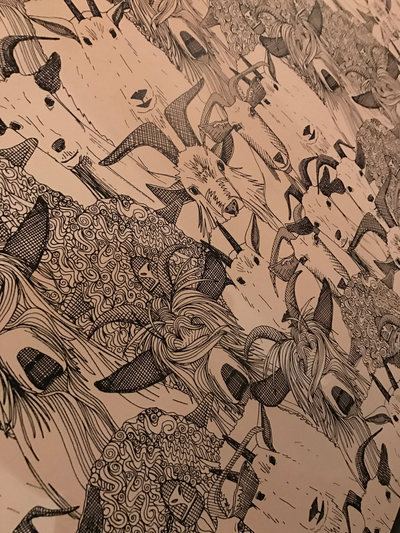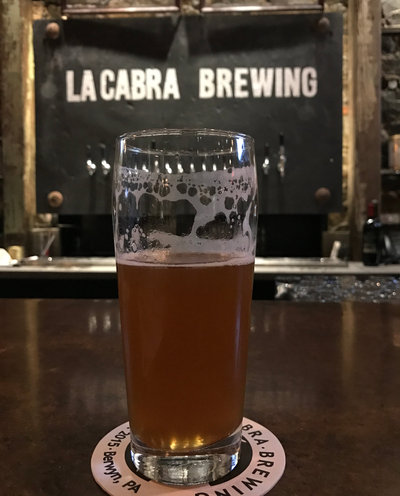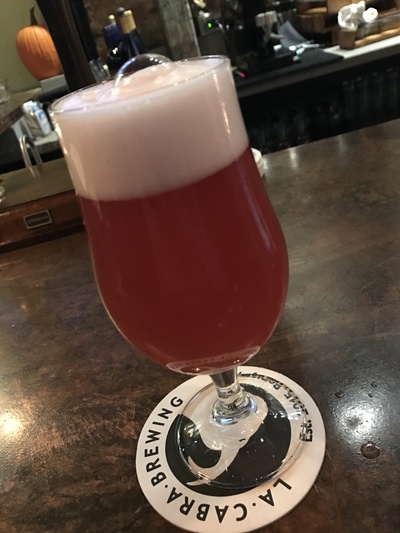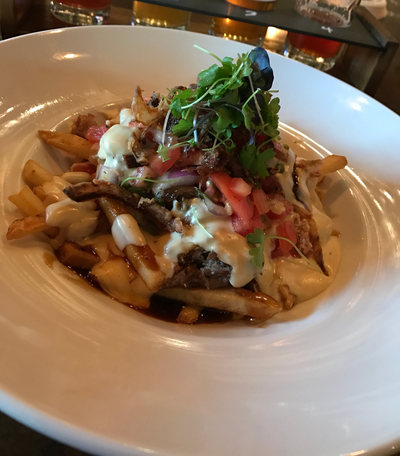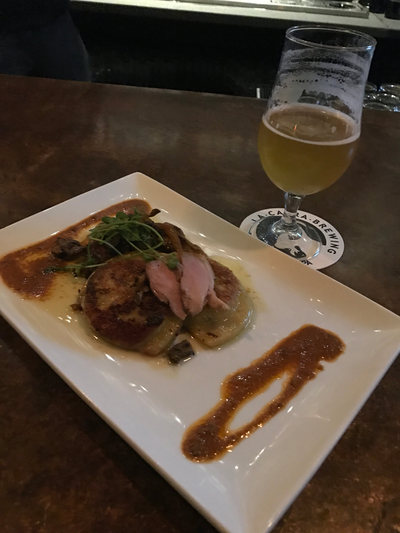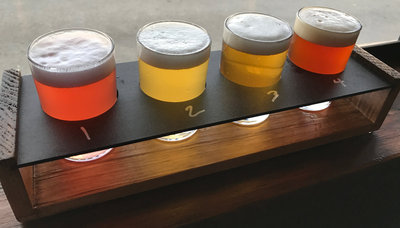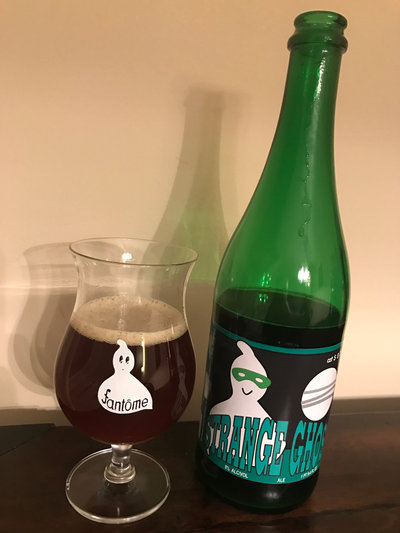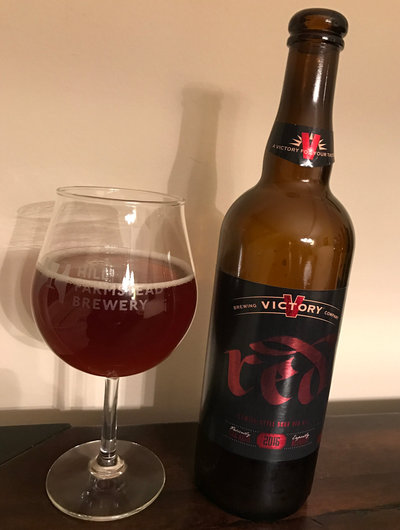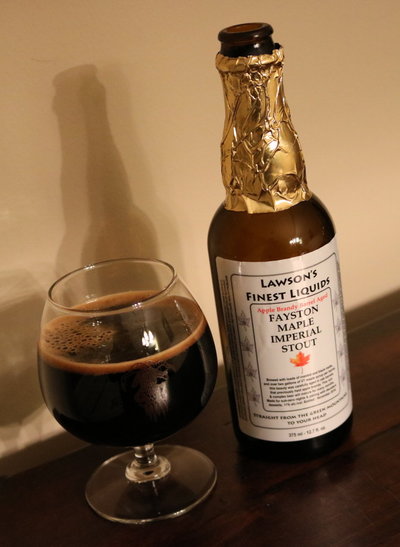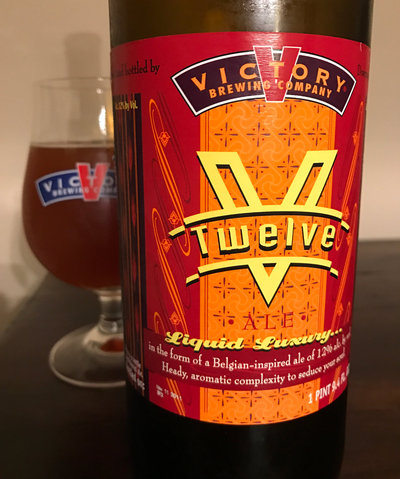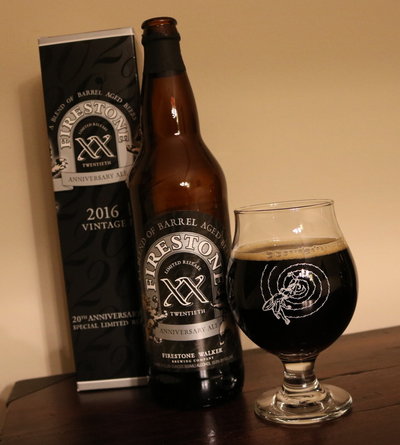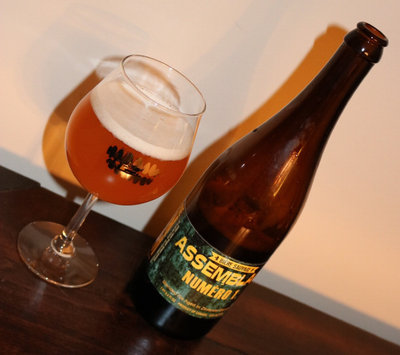One of the most interesting breweries to open their doors in the past few years, Tillamook, Oregon’s de Garde brewing has been making waves in the beer dork community. I got my first taste of their wares at a share last year, their Yer Bu (one of many Berliner Weisse inspired variants) was incredibly nimble at just 2.3% ABV and yet turned out to be one of the highlights of the night. Since then, I’ve heard enough about these folks to know that they make beer that’s worth seeking out.
What makes them so special? While some breweries have worked with spontaneous fermentation (notably Allagash and Jester King, amongst others), it appears that de Garde is the only U.S. brewery to rely solely on spontaneous fermentation for their beer. And what does that mean? They don’t use laboratory cultured yeast, they simply cool wort in a coolship, which is basically a huge, wide pan that exposes the wort to naturally occuring yeast and microflora, after which the wort is dumped into oak barrels of varying sizes and left to slumber until ready to be blended. As Pat’s Pints opined, “the brewers at de Garde pitch yeast with the same frequency that the Trappist monks in Westvleteren have sex.”
I’ve had discussions with wine-loving friends about terroir in beer, and while I usually point towards hops in said discussions, I think this sort of brewery deserves mention. It turns out that the year round temperate climate mixed with a mess of rivers and estuaries leading into the nearby Tillamook Bay has created conditions ideal for spontaneous fermentation. Indeed, they even experimented for over a year in trying to find a location for the brewery:
So we took wort and exposed it in different areas up and down the coast and tracked fermentation circuits over the course of a year or more. We narrowed it down to a few places and proceeded to do more trials to see if there’s consistency. Finally, we narrowed it down to Tillamook for the most viable opportunity. In the US we don’t have the benefit of a long history of this truly wild and natural brewing. So it took this extra exploration to see what works.
Tillamook: it’s not just for cheese. Anyway, that’s some serious dedication there, and from what I’ve seen, it’s paid off. I’ve had small pours of a few beers from them (all uniformly excellent), but these are the first I’ve managed to procure for myself. They aren’t the most prized releases and indeed are among the offerings that take the least amount of time to produce, but they’re quite nice nonetheless and someday I hope to procure the more lambic-like releases (which they seem to be gravitating towards anyway). For now, we’ve got saisons!
de Garde Saison Facile – A wild farmhouse ale aged in an oak foeder – Pours a clearish honey gold color with a finger or two of fluffy, medium bubbled white head that leaves some lacing as I drink. Smells nice, big waft of musty Belgian yeast spice, a little earthy funk, some fruity notes. Taste hits the sweet, tart, lemony fruit notes much harder than the nose would imply, but that yeasty spice and light funk are still there, with a light sour bite in the finish. Mouthfeel is well carbonated, crisp, and effervescent, not quite dry but the carbonation lends that impression, with low to moderate acidity. Overall, a rock solid foudred saison. B+
Beer Nerd Details: 7% ABV bottled (750 ml). Drank out of a teku glass on 2/3/17.
de Garde Petit Blanc – A tart farmhouse ale aged in oak with late harvest Riesling grapes – Pours a clear golden color with a finger of fluffy, dense head that quickly dissipates. Smells nice, lots of spicy Belgian yeast, a little oak, plenty of vinous fruit. Taste is sweet, vinous, fruity, with some spice in the middle, followed by oak and a little tartness emerging in the finish. Mouthfeel is well carbonated, medium bodied, less dry than the Facile but quite nice. Overall, another great saison offering. A-
Beer Nerd Details: 7.1% ABV bottled (750 ml). Drank out of a tulip glass on 2/10/17.
Must. Get. Moar. Would love to try their more lambic-inspired beers. Alas, those seem quite prized (see: The Broken Truck) and until production increases, I’m guessing it’ll be saisons and Bu variants for me. I know, boo hoo, poor me.


